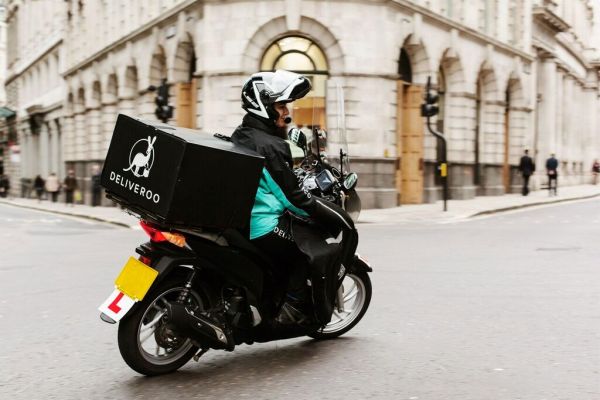Restaurant food delivery startup Deliveroo is taking the next logical step to expand its business by opening up to restaurants that have their own delivery fleets — thereby also expanding the food choices it can offer its couch-loving users.
Next month the company will launch the new service, called Marketplace+, in seven of its markets — onboarding restaurants that do their own food deliveries to its platform, and offering them the ability to tap into Deliveroo’s network of riders to extend their delivery services and support faster delivery times if they choose (it says restaurants will be able to “choose for themselves how best to offer delivery” but the impact on, for example, existing delivery fleet staff employed by larger food chains remains to be seen).
Commenting on the launch in a statement, Deliveroo CEO and co-founder Will Shu said: “Today we are unveiling the next big step in our plan to offer customers an even greater choice of restaurants, at a greater range of prices while continually improving service. That’s why we introduced delivery-only kitchens, bringing new, exciting restaurants to new areas. It’s why we invested in new restaurant brands to boost innovation, and it’s why today we are giving restaurants with their own fleets of riders the chance to be on our platform and to use our rider network whenever they need it.
“This is a major development for the company that will mean thousands of new restaurants delivering new orders to new customers and it’s part of our mission to become the definitive food company.”
The Marketplace+ service is being rolled out globally across all Devliveroo’s markets this year, but will launch first in July in Italy, Belgium, Netherlands, Australia, Hong Kong and the UK and Ireland.
The company says it’s expecting Marketplace+ to bring more than 5,000 additional restaurants into its UK app by the end of the year — which would be a 50% increased on the 10,000 current available.
The move will also expand where it’s able to offer a service in the market, saying it will add 50 new towns and cities in the UK by the end of the year.
It also expects that, within a year, it will be able to reach an additional 6 million UK customers. (It says it’s already profitable in the whole of the UK market, and notes that its core service achieved growth of 650% globally in 2017.)
Explaining why it’s able to onboard thousands more restaurants via the expansion to its marketplace, Deliveroo says this is as a consequence of building up what it dubs “its own extensive delivery network of 35,000 riders worldwide and 15,000 riders in the UK”.
Albeit, none of those riders are considered employees by the company.
Rather, like many gig economy platforms, Deliveroo classes the riders who deliver its product as self-employed contractors. And this type of classification is under increasing legal pressure in European markets such as the UK — where the government is currently reviewing employment law to take account of tech-fueled shifts in work.
Just today the UK’s supreme court backed a rights challenge by a ‘self-employed’ plumber who had solely worked for six years for Pimlico Plumbers — supporting an earlier employment tribunal decision that he is entitled to workers rights.
Uber has also faced a similar tribunal decision related to its classification of drivers as self-employed, and is continuing to appeal.
So while Deliveroo is loudly touting business growth and expansion, as it prepares to plug thousands more restaurants into its platform, another aspect of gig economy businesses which is also set to fatten substantially — yet which none of these companies are shouting loudly about — are the associated costs of doing this kind of business once all the ‘self-employed’ people who actually deliver the product are judged to be workers.
Then these platform businesses will be picking up the bill for all those service delivering workers’ rights.
And in the UK at least the courts have been setting clear direction on that front — and feeding the government’s review of employment law.

COMMENTS